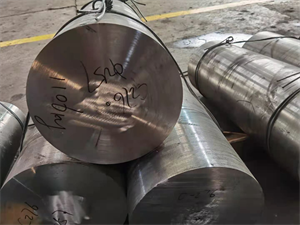What is the difference between nickel alloys 625, 330 and 600?
What is the difference between nickel alloys 625, 330 and 600?
You may be familiar with the Inconel alloy high nickel alloy series. This family of alloys is known for its performance under extreme thermal conditions, which makes each Inconel nickel alloy variant very popular for in-furnace applications such as heat treating or annealing steel. However, what are the differences between the Inconel Nickel Alloy range? This is a question that Makrolite Alloy’s salesmen are often asked. In fact, a customer recently did an experiment where they placed their product in a furnace at 1975 degrees Fahrenheit for one hour, and he wanted to know which of the three different Inconel nickel alloys would be best suited for their application: 330, 600, or 625?

1. Incoloy 330
Although it is part of the Inconelmoyanalloy family of heat-resistant metal alloys, 330 is more commonly known as Incoloymoyanalloy or RA330. With a nickel content of 34% to 37% and chromium content of 17% to 20%, Incoloymoyanalloy has an incredible resistance to yangization at temperatures up to 1,148°C. This is the most important of the three. Incredible resistance to yang chemistry, with carburizing and nitriding capabilities.
Rapid changes in temperature (common in heat-treating applications) are not a big problem for alloy 330 because it resists thermal shock. Like many Inconelmoyanalloy alloys, 330 maintains a large degree of tensile strength at extreme temperatures compared to common steel alloys.
In fact, in the Alloy Properties Guide, Rolled Alloys lists RA330 as having “better” (above average) properties in terms of strength, oxidation resistance, resistance to carburization, and resistance to sulfur oxidation, as well as being rated as “best” of the high-temperature alloys it offers. “Thermal shock resistance.
2. inconel600
inconel600 is a popular high-temperature resistant yangified material. at a low nickel content of 72%, this metal alloy has more than twice the nickel content of Incoloy 330.
While this contributes to the metal’s high-temperature oxidation and carburization resistance, it does make the metal susceptible to sulfur attack. As stated in the Rolled Alloys Guide, Inconel 600 is used for oxidized sulfur, reduced sulfur, or molten metals such as copper, zinc, or magnesium. It does, however, have good tensile strength, above-average resistance to oxidation and thermal shock, and first-rate resistance to carburization. It also has incredible resistance to chloride stress corrosion cracking if stress is relieved.
3. Inconel 625
In terms of nickel content, Inconel 625 falls between alloys 330 and 600, with a low nickel content of 58%. The chromium content is between 20-23%, which is the second most abundant element in the alloy. The addition of niobium and molybdenum improves the performance of the alloy at different temperatures, which explains the excellent strength and toughness of Inconel 600 in the temperature range from 0°C to 1093°C. The alloy is also characterized by a high creep resistance.
The alloy also offers exceptionally high creep fracture strength, fatigue resistance, and resistance to chloride pitting/crevice corrosion. Also, this metal is very easy to weld compared to other Inconel nickel alloys. Recommended uses for this metal include jet engine exhausts, torch stacks, seawater equipment, and chemical plant equipment because of its high chemical and temperature resistance.
In corrosion testing of rolled alloys, 625’s resistance to oxalic acid was particularly high compared to other materials, with the material experiencing only 6.0 mils/year of corrosion in a 10% boiling solution of oxalic acid. In comparison, 316L stainless steel experienced 44.9 mils/year of corrosion in the same solution. However, its resistance to sulfuric acid was less impressive, at 37 mils/year of corrosion in a plating solution with a concentration of 10%.
So which material is best for your needs?
Lin Kun Alloys suggests that it depends on what your application process looks like and what chemicals, if any, are involved. Inconel 600 has good temperature resistance, but not more than 330, which is completely unsuitable for any application involving the use of sulfuric acid compounds. Also, 330 has good resistance to sulfur oxidation without reducing the sulfur content. Inconel 625 is generally resistant to most acids but can be more costly than alloy 330, which has a lower nickel content.


